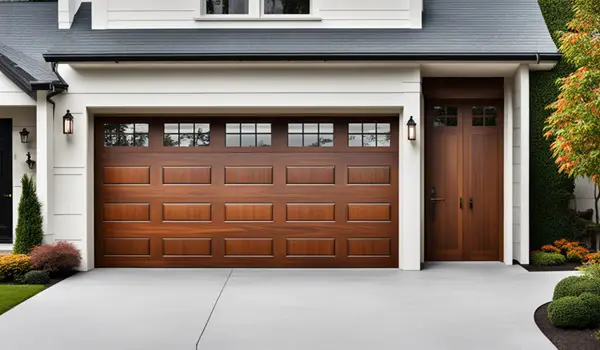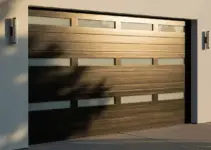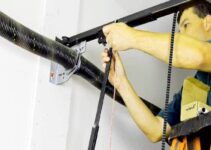How to Bracing Garage Door
Bracing garage door is an important step in protecting your home from high winds and storms. Garage doors are one of the largest and most vulnerable openings on your home, and they can easily be damaged or destroyed in strong winds.
By bracing your garage door, you can help to prevent it from being blown in and damaging your home and belongings.
In this article, I’ll give you what garage door bracing is, why it’s important, the benefits it offers, and step-by-step instructions on how to effectively brace your garage door.
What is Garage Door Bracing?
Garage door bracing involves reinforcing your garage door to withstand the force of strong winds and storms.
As one of the largest openings in your home, a garage door can easily be compromised during adverse weather conditions.
Bracing adds structural support to the door, preventing it from collapsing or being blown in, thus safeguarding your home and possessions.
Why is it Important to Brace Garage Door?
The vulnerability of garage doors in severe weather conditions is often underestimated. During high winds, a garage door can act as a sail, leading to potential structural damage to your home.
By investing in garage door bracing, you provide your property with an added layer of protection, minimizing the risk of costly repairs.
Benefits of Bracing Garage Door
1. Enhanced Structural Integrity
Garage door bracing significantly improves the structural integrity of your door.
It reinforces weak points and distributes the force exerted by strong winds, reducing the likelihood of the door collapsing.
2. Protection Against Windborne Debris
During storms, windborne debris can become projectiles, causing severe damage.
Garage door braces act as a barrier, helping to deflect and absorb the impact of debris, preventing it from penetrating your home.
3. Prevention of Water Infiltration
Bracing not only protects against wind but also helps prevent water infiltration.
A reinforced garage door is less likely to allow rainwater or other forms of moisture to seep into your garage.
4. Increased Lifespan of Garage Door
Regular bracing not only safeguards your property during storms but also extends the lifespan of your garage door.
By preventing unnecessary stress and strain, bracing ensures your door functions optimally for a more extended period.
How to Brace a Garage Door

Step-by-step Instructions
- Evaluate Your Garage Door: Before bracing, assess the type and condition of your garage door. Different doors may require specific bracing techniques.
- Select the Right Bracing Kit: Choose a bracing kit that suits your garage door type and wind load requirements. Options include cross braces, lateral braces, hurricane braces, wind bracing brackets, strut braces, angle braces, and tie-down straps.
- Gather Tools and Materials: Ensure you have the necessary tools, including a power drill, screws, and a ladder. Follow the manufacturer’s instructions and guidelines provided with the bracing kit.
- Install Cross Braces: Attach cross braces horizontally across the panels of the garage door. These braces distribute the wind load evenly, enhancing stability.
- Add Lateral Braces: Lateral braces reinforce the vertical sections of the garage door, preventing buckling under strong winds.
- Secure Hurricane Braces: In hurricane-prone areas, additional hurricane braces are essential. These typically involve securing the door with sturdy metal brackets.
- Attach Wind Bracing Brackets: Wind bracing brackets are designed to anchor the door to the garage floor, adding an extra layer of support.
- Install Strut Braces: Strut braces are vertical supports that enhance the door’s strength. Install them according to the manufacturer’s instructions.
- Add Angle Braces: Angle braces provide diagonal reinforcement, further stabilizing the door against wind forces.
- Utilize Tie-Down Straps: Tie-down straps anchor the garage door to the garage floor, preventing it from being lifted during strong winds.
Tools and Materials Needed
- Power drill
- Screws
- Ladder
- Garage door bracing kit
Safety Tips
- Prioritize safety by following manufacturer guidelines and using appropriate safety gear.
- Seek professional assistance if unsure about installation procedures.
- Regularly inspect and maintain the bracing system to ensure continued effectiveness.
Types of Garage Door Braces
1. Garage Door Cross Braces
Cross braces are horizontal reinforcements that distribute wind load evenly across the garage door panels, providing stability and preventing sagging.
2. Garage Door Lateral Braces
Lateral braces reinforce the vertical sections of the garage door, minimizing the risk of buckling and improving overall structural integrity.
3. Garage Door Hurricane Braces
Designed for hurricane-prone regions, these braces provide additional strength and stability to the garage door during extreme weather conditions.
4. Garage Door Wind Bracing Brackets
Wind bracing brackets anchor the garage door to the floor, preventing it from being lifted by strong winds.
5. Garage Door Strut Braces
Strut braces are vertical supports that enhance the garage door’s strength, especially in larger doors or those with higher wind loads.
6. Garage Door Angle Braces
Angle braces provide diagonal reinforcement, adding stability and preventing torsion during high winds.
7. Garage Door Tie-Down Straps
Tie-down straps anchor the garage door to the floor, preventing it from being lifted during strong winds.
Garage Door Bracing Requirements

International Building Code (IBC) Garage Door Wind Bracing Requirements
Adhering to the International Building Code (IBC) ensures that your garage door bracing meets standardized requirements, enhancing the overall safety of your property.
Local Building Codes for Garage Door Wind Bracing
In addition to the IBC, familiarize yourself with local building codes related to garage door bracing. Local regulations may have specific requirements based on regional weather patterns and risks.
Troubleshooting Garage Door Bracing Problems
Common Garage Door Bracing Problems
- Loose Braces: Over time, braces may become loose due to vibrations and weather conditions.
- Corrosion: Exposure to the elements can cause corrosion, compromising the strength of the braces.
- Improper Installation: Incorrect installation may lead to ineffective bracing and potential door failure.
How to Fix Garage Door Bracing Problems
- Tighten Loose Braces: Regularly inspect and tighten loose braces to ensure they provide optimal support.
- Address Corrosion: Replace corroded braces promptly to maintain their structural integrity.
- Professional Inspection: If unsure about the installation or if problems persist, seek professional inspection and assistance.
Conclusion
Bracing garage door is a vital step in safeguarding your home and possessions from the destructive forces of high winds and storms.
By understanding the importance of garage door bracing, selecting the right type of braces, and following proper installation procedures, you significantly enhance the resilience of garage door.
Regular maintenance and adherence to building codes further ensure the ongoing effectiveness of your bracing system. Don’t leave the security of your home to chance invest in garage door bracing today.
Resources for More Information
For more detailed information on garage door bracing, consult the following resources:
- International Code Council (ICC) – www.iccsafe.org
- National Storm Shelter Association (NSSA) – www.nssa.cc
- Garage Door Manufacturers – Check with your garage door manufacturer for specific bracing recommendations.
Remember, the safety and security of your home start with a well-braced garage door. Invest wisely and fortify your property against the unpredictable forces of nature.


